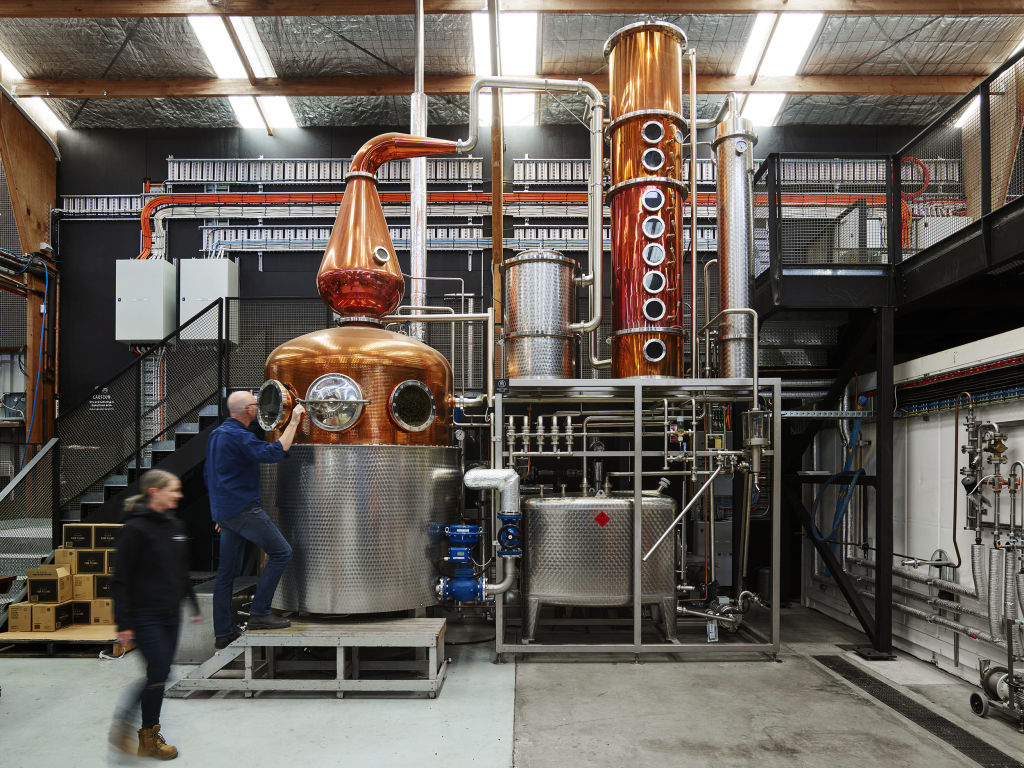
Spirits high amongst craft distillers for a return to good times
In rural towns and regional centres across Australia, our thirst for craft alcohol has been insatiable. Beer or cider, gin or whisky, rum or vodka, it’s all been on tap.
Every six days a new independent brewery was coming on line before the COVID-19 pandemic, so rapid was the growth in small-batch ales.
The Independent Brewers Association (IBA) reported that some 650 independent brewers had secured almost 10 per cent of the national beer market, and the most successful were reporting year-on-year growth of a staggering 30 per cent.
The Australian Distillers Association (ADA) spoke of a similar trend in spirits manufacturing. In five years the number of distillers had grown from 75 to more than 300 and, like the brewers, two-thirds were located outside major cities.
Average annual spirits sales growth was being put at 15 per cent and the industry was tracking to add $1 billion to the Australian economy.
In small centres hard hit by drought, struggling to offer skilled employment or expand their tourism offerings, craft alcohol was providing confidence and welcome cash. “We’ve been in the gold rush era,” said Dereck Hales, of Victorian brewer Bad Shepherd.
“Like the distillers, our breweries have become important cogs in their communities, generating development, social cohesion and jobs.”
Regional clusters of distillers and micro-brewers had established sustainable local supply chains, and were beginning to generate healthy export earnings.
From their premises in historic commercial buildings and modern, custom-designed tap rooms and beer houses, many were also starting to partner with other tourist operators to create destination brands.
But since the coronavirus crisis put a handbrake on hospitality and travel, ambitions and estimates have been seriously revised.
Both craft distillers and brewers have been hit hard by the loss of the bar market and travel restrictions. Mothballed international travel has been particularly punishing for distillers, some of whom had seen their duty-free market grow to represent 20 per cent of total sales volume.
Still, ADA president Stuart Gregor, who is also co-founder of Four Pillars Gin in Healesville, Victoria, remains optimistic.
“Craft distilling has gone from being a true cottage industry to a significant contributor to the drinks industry and Australian economy,” he said.
“Unlike the wine industry, we don’t have to rely on a certain climate or single annual harvest. If we get it right, craft distilling has every bit as much potential, if not more, than wine, and we have the chance to make Australian spirits globally famous.”
Despite the economic downturn, established brands in the craft brewing and distilling sectors say they continue to attract interest from companies looking to buy equity. Mid-tier investment of the kind demonstrated by publicly listed craft beer “accelerator” Founders First is also impacting on the wholesale market.
Former lawyer Cameron Syme counters claims that craft beer and spirits markets are fast becoming saturated, particularly in smaller towns.
One of the largest whisky producers in the country, he has invested more than $15 million in his three distilleries in the Greater Southern and Margaret River regions of Western Australia.
“In America, craft distillers supply 2 per cent of the domestic market and they are about a decade ahead of us,” Mr Syme said.
“We currently supply 0.5 per cent of Australia’s domestic spirit consumption, so there’s no reason why we can’t look to a four-fold increase in the market domestically.
“Even with COVID lockdowns, a lot of the growth for us will be in international markets. We’ve had export inquiries recently from Spain, Italy, France, Germany and the US. Australian spirits are now occupying a top-shelf position on the back of major awards.”
There’s no question that this year’s border closures, social distancing regulations and high freight charges have proven challenging, but IBA general manager Kylie Lethbridge is upbeat.
“Our artisans are constantly pushing the boundaries, demonstrating their creativity and determination, and our industry still represents a significant investment opportunity,” she said.
“Anecdotally, we know that brewers have continued to attract private investment or investment from super funds to support brewery expansion. Major commercial breweries have acquired smaller breweries in order to access market share of the growing demand for craft beer.”
For rural and regional Australia, the popularity and profitability of craft alcohol has necessitated strong partnerships with agricultural producers and allied service providers.
A commitment to regional provenance and original flavour profiles is seeing producers source a variety of local grains, hops, yeast, sugarcane, botanicals and indigenous fruits to evoke the terroir previously reserved for wine-making.
At Van Diemen Brewing, in northern Tasmania, Will Tatchell uses grains and hops grown on the family farm, indigenous wild yeasts, and foraged wild flora to create his distinctive farmhouse ales.
He’s put on hold plans to develop a public tap room, for now, but as the brewer of some beers that spend three years in barrels, he’s content to take a longer-term business outlook.
“Every industry, not just the beverage industry, is taking stock right now, but we’ve been lucky to be in a position to continue creating beer self-sufficiently,” Mr Tatchell said. “I’m a glass half-full kind of person and this quiet time has allowed us to explore a few new beer options.”
Contract brewing and distilling has kept some producers afloat in recent months, while others have gone into complete hibernation. But those that can are experimenting, expanding and even investing in additional infrastructure, confident they can retain their loyal following.










